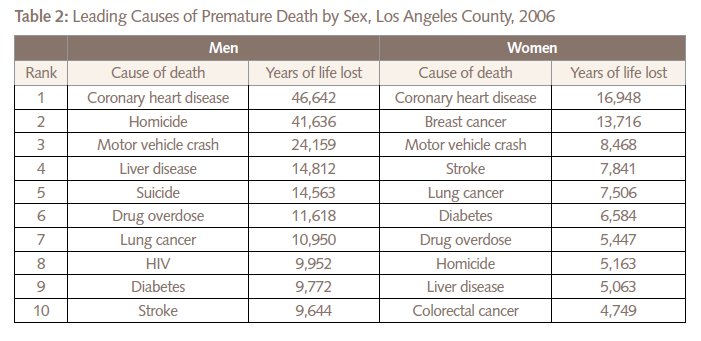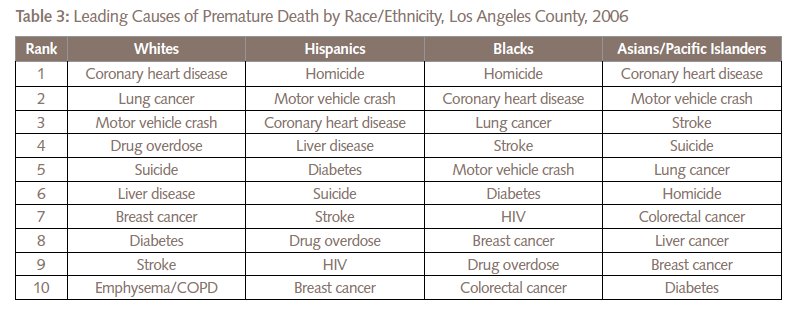A report released by the public health department titled “Life Expectancy in Los Angeles County” suggests that Compton ranks among the lowest life expectancy in L.A. County. Although the life expectancy rate overall has risen steadily, increasing from 75.8 years in 1991 to 80.3 years in 2006, a visible gap still exists between some of L.A.‘s geographical, economic and ethnic communities.


The report describes a “striking 17.5 year difference” in life expectancy between those at the top of the ladder — Asian women — and those at the bottom — African American males. Additionally, the report showed that economic hardship affects life expectancy levels, although perhaps not as extremely as might initially be assumed. In cities such as Baldwin Park, Bell and Huntington Park, where the economic hardship rating is considered “high,” life expectancy rates are relatively high also.
There are, however, anomalies where economic hardship and life expectancy do not seem to correlate at all. La Mirada, for example, suggests a contradiction: although the economic hardship level ranks in the first quartile, life expectancy is ranked in the fourth quartile at just 78.9 years.
The leading cause of death for both men and women in L.A. County is coronary heart disease. This and motor vehicle accidents in third position are the only areas men and women tie. The second leading cause of death for women is breast cancer, while men are killed by homicide. Homicide ranks in eighth place for women. Men are more likely to die from HIV and suicide, neither of which rank in the top ten for women.

There is marked difference between ethnic groups for leading causes of death. White and Asian men and women are more likely to die from heart disease, while Black and Hispanic men and women are more likely to die by homicide. Black men and women are least likely of all ethnic groups to die by suicide.

The report suggests a number of ways to increase life expectancy for L.A. County, including creating smoke-free environments, reducing alcohol and drug consumption, reducing the spread of HIV, and increasing access to medical care.
In the latter case, However, L.A. County may face some difficulty. Budget cuts may soon make their way into the medical industry. According to the Los Angeles County Board of Supervisors, the county is currently preparing to reduce county medical facilities by half.














